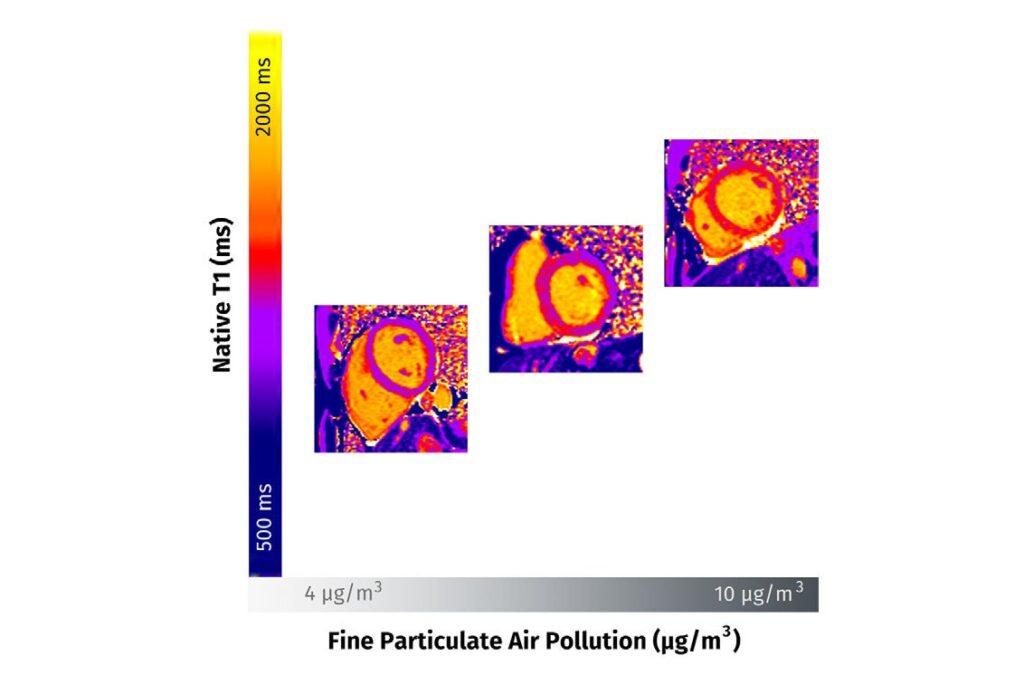
Cardiac MRI scans have unveiled alarming insights into the effects of air pollution on heart health, according to a study published on July 1 in the journal Radiology. The research underscores the growing recognition of air pollution as a significant cardiovascular risk factor, a concern that extends beyond traditional predictors such as smoking or hypertension, as noted by the Radiological Society of North America (RSNA).
“Even modest increases in air pollution levels appear to have measurable effects on the heart,” stated Dr. Kate Hanneman, the study’s senior author from the University of Toronto. “Our study suggests that air quality may play a significant role in changes to heart structure, potentially setting the stage for future cardiovascular disease.”
Understanding the Link Between Air Pollution and Heart Disease
Globally, heart disease remains the leading cause of death. While previous research has indicated a connection between poor air quality and cardiovascular disease, the specific changes in heart structure due to air pollution exposure have been less clear. The study highlights that fine particulate matter in the air, such as vehicle exhaust, industrial emissions, and wildfire smoke, can contribute to diffuse myocardial fibrosis—a form of scarring in the heart muscle that can precede heart failure.
Dr. Hanneman, along with Dr. Jacques Du Plessis and their team, investigated the relationship between long-term exposure to fine particulate matter with a diameter of 2.5 micrometers or smaller (PM2.5) and the extent of diffuse myocardial fibrosis. This was quantified using cardiac MRI native T1 mapping z scores, a method used to assess myocardial tissue characteristics.
Study Findings and Statistical Insights
The study analyzed 694 patients who underwent cardiac MRI between January 2018 and December 2022. Of these, 493 had dilated cardiomyopathy, while 201 exhibited normal findings. The researchers assessed the patients’ exposure to PM2.5 based on residence-specific ambient concentrations, utilizing data from the nearest air quality monitoring station.
In multivariable models, each 1-µg/m3 increase in one-year mean PM2.5 exposure was associated with a 0.3 higher native T1 z score in patients with dilated cardiomyopathy (p < 0.001) and 0.27 higher native T1 z score in controls (p = 0.02).
For absolute values, each 1-µg/m3 increase in one-year mean PM2.5 exposure was associated with 9.1 msec higher native T1 at 1.5-tesla imaging (p = 0.01) and 12.1 msec higher native T1 at 3-tesla imaging (p < 0.001).
The study found the most significant effects of PM2.5 exposure on native T1 z scores in women, smokers, and patients with hypertension. Overall, the findings suggest that higher long-term exposure to fine particulate air pollution correlates with increased levels of myocardial fibrosis, indicating a potential mechanism by which air pollution leads to cardiovascular complications.
Implications for Public Health and Individual Action
Dr. Hanneman emphasized the importance of neighborhood air quality data in assessing an individual’s cardiac health. “A simple way to estimate someone’s exposure to air pollution is by looking at air quality data for the neighborhood they live in—information that is publicly available in many areas,” she explained. For those seeking a more detailed assessment, portable air monitors can provide real-time air quality data.
Mitigating the effects of air pollution on lung and heart health can be addressed on both personal and societal levels. “On a personal level, people can take steps like limiting outdoor activity on days when air quality is poor and using indoor air purifiers to reduce exposure,” Dr. Hanneman advised. “On a broader scale, public health efforts include improving air quality standards, reducing emissions from traffic and industry, and addressing sources such as wildfire smoke to improve air quality for everyone.”
Future Research and Policy Directions
In an accompanying commentary, Dr. Davis Vigneault of Stanford University highlighted the role radiology can play in addressing air pollution exposure and heart disease risk. “The study suggests several interesting avenues for future research, including the investigation of particulate pollution components, related co-pollutants, and at-risk subgroups,” he noted. “Moreover, [the] work sets an important example of how imaging research may be used beyond the diagnosis of an individual patient to guide public policy interventions to improve health outcomes more broadly.”
The study’s findings add a crucial layer to our understanding of the health impacts of air pollution, emphasizing the need for continued research and policy efforts to mitigate these risks for future generations.







